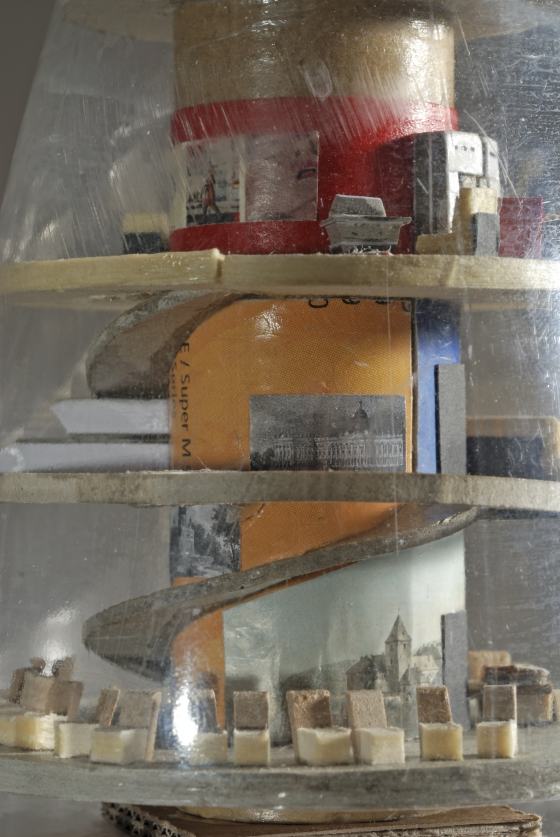Pieces by Matias Bechtold and Things from the Museum Collection
Matias Bechtold places a focus in his artistic works on the special traits of technical casings by reinterpreting the interior of a device as living space. Where a normal user may view the interior of a device as determined by the function of the device itself, Matias Bechtold presents the extracted section as a different world. In this way, we no longer see the back panel of a television, but rather technical architecture or a cockpit – and what was once a hand-held vacuum cleaner becomes a spaceship.
Museum der Dinge is exhibiting these often completely unknown artistic interpretations of casing interiors by Matias Bechtold in its collections, in order to provoke a different perspective on the parts that belong to technical devices.
At the least for most analog-based devices and machines that we use in our daily domestic lives, it’s typical that most are specialized to have a particular function that can be recognized at a glance. But how they perform these functions: the kind of technology inside them, how it is created and how it looks, all usually are not apparent through its exterior but rather when they are opened, which often in the process damages or even destroys them. As such, interest in the interior of devices and machines and how they’re in fact made is usually nominal. This is not dissimilar to the often highly complex packaging that we use to transport and store our food.
This different perspective through which Matias Bechtold views out world is essentially a displacement of scale. For him, small can effortlessly become large: For Bechtold, the true dimensions of a thing, be it a vacuum cleaner or a skyscraper, play a secondary role. He instead perceives the structural relationships of their form and design – and can as such transform a stack of empty cookie packaging into a dense and sophisticated glass skyscraper, which we can easily inhabit with our imaginations.
The development of the seemingly playfully created parallel worlds is in fact the basis for Matias Bechtolds highly technical skills, which makes it possible for him develop imaginings from whatever is available or to give it a new meaning through additions and adjustments. What’s most striking is his workmanlike ability to seamlessly connect pieces from high-end technology and as such connect the various spheres of reality. This is especially apparent in the objects, in which Bechtold adapts functioning television sets to confront his fictitious worlds with the fictions of our everyday life.
Matias Bechtold lives and works as an artist and model maker in Berlin.



